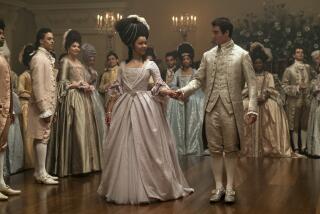BRITAIN : Barristers Tangle Over Hairy Issue
- Share via
LONDON — Suddenly, some barristers here have gotten wigged out over one of this nation’s colorful anachronisms from Dickensian days: the hairpieces worn by judges and barristers. They want them put into history’s dustbin.
For 300 years, judges and lawyers have sported their ceremonial horsehair wigs in courtrooms--long after that once-fashionable practice was abandoned by other professions.
But the Commercial Bar Assn. has suggested that wig wearing be banned in court.
The idea has been referred to the Judges Council, a group that oversees activities of the higher judiciary. Lord Taylor, the Lord Chief Justice who recommended that the issue be taken up by the Judges Council, himself favors having Britain’s legal eagles go baldish.
Lord Taylor says the wearing of wigs in a courtroom creates an “18th-Century image” that makes British judges and barristers seem “out of touch” with contemporary society. He has made it clear, however, that he expects the Judges Council not to rush to judgment but to give the issue due deliberation.
The wearing of wigs in court in Britain dates to the late 17th Century, when Charles II assumed the throne. While in exile, Charles II picked up the habit from French aristocrats of donning spare hair; members of the legal profession quickly followed fashion.
But in the 19th Century, wig wearing in general quickly declined in Britain, except in the courts.
The original wigs for judges and lawyers were made of black horsehair, which needed frizzing, curling and powdering. But in 1822, Humphrey Ravenscroft, of the wig-making firm that still bears the family name, devised a hairpiece fashioned from white horsehair; its curls also stayed in place--and needed no powder.
Today, the Ravenscroft firm produces about 900 wigs a year at prices of up to $700; about a third of them are exported to British Commonwealth countries in Africa, the Far East and Oceania, where the courtroom practice of wearing hairpieces still persists.
Wigs come in two forms: the short ones that simply cover the head and are for workaday use, and the longer models that reach below the shoulders and are worn on more formal occasions. Wigs--and robes--are only worn in open court by judges and lawyers; in more informal sessions in judicial chambers, business attire is the norm.
“Judges at a stroke could disarm a good deal of public misunderstanding of the legal profession if we stopped wearing wigs and gowns in court,” the Lord Chief Justice argued.
Anthony Colman, chairman of the Commercial Bar Assn., said, “Wigs just make us appear pompous and out of date.”
Britain’s highest court of appeal, the Law Lords, already has effectively weighed in on the issue: Its members wear business suits while hearing cases. And the new Speaker of the House of Commons--a woman--has decided against wearing a parliamentary wig, as her male predecessor did.
But the custom of judges donning wigs has its supporters, particularly among law-and-order, conservative commentators. When the threat of abolishing wigs was first raised, social historian Paul Johnson fumed, “Why should judges suddenly feel ashamed of a garb which symbolizes centuries of impartial and incorrupt justice?”
More to Read
Sign up for Essential California
The most important California stories and recommendations in your inbox every morning.
You may occasionally receive promotional content from the Los Angeles Times.









